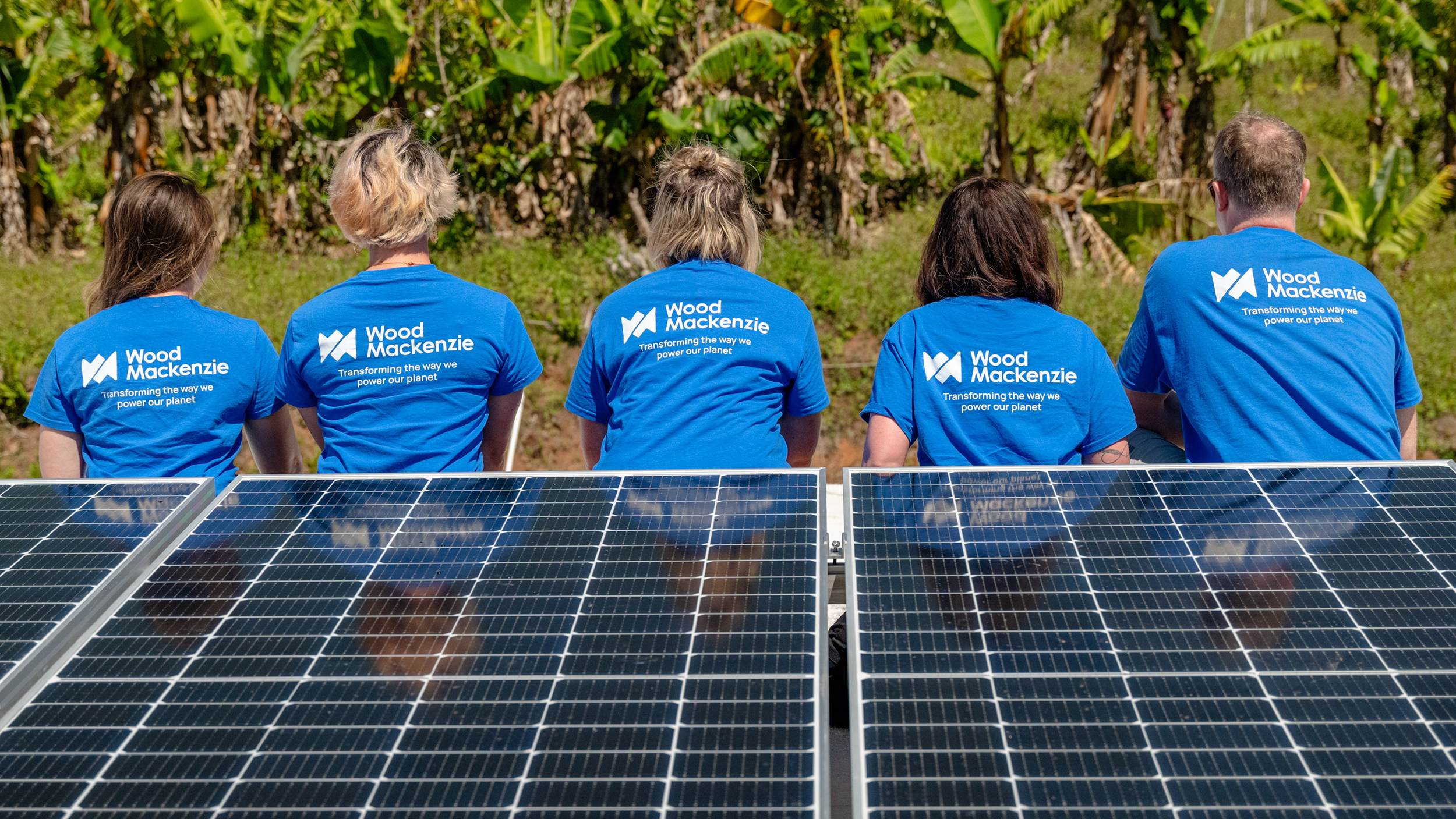Request a meeting with a member of our team at IEW 2025
Industrial demand, shrinking production fuel rise in Indian LNG imports
As India Energy Week approaches, we delve into the country's LNG market.
4 minute read
Johnson Quadros
Head of Gas and LNG research

Johnson Quadros
Head of Gas and LNG research
Johnson is an LNG industry professional with 20 years of global experience.
Latest articles by Johnson
-
Opinion
How Asia will drive global gas and LNG investment to 2050
-
The Edge
Walking Japan’s energy tightrope
-
Opinion
Industrial demand, shrinking production fuel rise in Indian LNG imports
-
Opinion
Asia Pacific gas & LNG: 5 things to look for in 2025
-
Opinion
Gas & LNG in Asia: the next 10 years
-
Opinion
Will gas fuel Asia’s data centre boom?
Sonal Ranjan
Research Associate, APAC Gas & LNG Research

Sonal Ranjan
Research Associate, APAC Gas & LNG Research
Sonal focuses on Southeast Asia's gas and LNG markets.
Latest articles by Sonal
-
Opinion
How Asia will drive global gas and LNG investment to 2050
-
Opinion
Industrial demand, shrinking production fuel rise in Indian LNG imports
-
Opinion
Will gas fuel Asia’s data centre boom?
Raghav Mathur
Principal Research Analyst, Gas & LNG

Raghav Mathur
Principal Research Analyst, Gas & LNG
Raghav Mathur leads the South Asia, gas and LNG research at Wood Mackenzie
Latest articles by Raghav
-
Opinion
How Asia will drive global gas and LNG investment to 2050
-
Opinion
Industrial demand, shrinking production fuel rise in Indian LNG imports
-
Opinion
Transforming energy: 5 key questions ahead of Gastech 2024
-
Opinion
Will India’s new regulations release pressure on LNG?
Akshay Gupta
Research Analyst, Gas and LNG Markets

Akshay Gupta
Research Analyst, Gas and LNG Markets
Akshay covers South Asian gas and LNG markets, with a focus on the Philippines.
Latest articles by Akshay
-
Opinion
How Asia will drive global gas and LNG investment to 2050
-
Opinion
Industrial demand, shrinking production fuel rise in Indian LNG imports
By 2050, India will be the world’s third-largest economy. As the government focuses on upgrading the country’s infrastructure and expanding the manufacturing sector, how India powers its economic growth will be crucial. It is currently the second-largest power market in the Asia-Pacific region after China, with estimated demand of 1,749 TWh in 2023.
India Energy Week, which will run from 11 to 14 February 2025, will see global energy leaders, policymakers and innovators come together to find sustainable solutions to India’s key energy challenges. Ahead of this high-profile gathering, Wood Mackenzie’s analysts have taken an in-depth look at the Indian liquefied natural gas (LNG) market, where softer prices, industrial dynamism and greater access to gas are likely to spur a rise in the years to come.
Wood Mackenzie’s experts will be on hand to discuss their views on the country’s LNG market in more detail at Indian Energy Week, but read on for a brief introduction in the meantime.
Growing gas demand and waning production
Indian liquefied natural gas imports totalled a record 26 mmpta in 2024, accounting for more than half of the country’s gas consumption. We expect LNG demand to continue to grow in the coming years, exceeding 37 mmtpa by 2030 and 88 mmtpa by 2050, as India’s demand for gas rises while its domestic production shrink. By 2032 already, LNG should account for around two-thirds of India’s gas consumption and will become third largest importer of LNG after China and Japan.
LNG consumption saw a whopping 11.5% compound annual growth rate (CAGR) from 2022 to 2024, thanks to lower prices, a rise in industrial demand, subsidies for Fertiliser sector and changes to pipeline tariff mechanism. Industrial gas demand, primarily from the fertiliser and refinery sectors, alone posted a 9% CAGR in 2022-24.
Greater gas availability for new industrial units and the potential expansion of refineries and petrochemical plants will boost Indian industrial gas demand to around 63 bcm by 2040. Sizeable growth will come from the city gas distribution (CGD) sector, which includes the transport, residential and commercial segments, as well as small industry. The CGD sector’s share of the gas consumption mix is expected to increase from 25% to 32% by 2030.
The use of regasified LNG (RLNG) for power generation, meanwhile, has doubled from 2022 levels. Gas has played a pivotal role in supporting peak load demand during summer heatwaves since the government enacted an emergency provision for the use of gas power plants.
Although the power segment accounts for a fair share of gas demand, gas’s share of the power generation mix is expected to remain fairly modest. India is home to vast amounts of cheap coal, while renewables are highly competitive, with solar power currently available at a 22% discount to coal-fired generation.
Connectivity opens new LNG markets
Pipeline connectivity is set to unlock new regions for LNG demand. India’s Petroleum and Natural Gas Regulatory Board has authorised the construction of 10,800 km of gas pipelines, improving access to gas in the southern and eastern parts of the country as soon as 2025 and 2026 and strengthening regional interconnectivity. Industries such as steel, aluminium, chemicals, ceramics and glass will boost gas demand for heating boilers and furnaces.
In 2024, Indian LNG buyers sought to renew and sign new long-term LNG supply and purchase agreements (SPAs) for a total of 14.7 mmtpa. Spot LNG imports almost doubled to more than 110 cargoes during the year to plug the gap between rising demand and shrinking production. While the contractual LNG volume sat at around 22 mmtpa in 2024, it will surpass 27 mmtpa in 2026 with the addition of the SPAs signed in 2024. The need to sign further long-term LNG contracts will be key to securing supply.
Domestic production set to wane
We expect Indian domestic gas production to increase by 4.5% and peak in 2025, then decline by an average 3.6% annually over the next five years, due to structural declines in mature fields and delays in the development of new projects. After 2030, production is expected to see a 9% annual decline through 2040, driven by the exhaustion of mature fields and slower-than-expected discoveries.
The narrative could change, however, if the Oilfields (Regulation and Development) Amendment Bill introduced in August 2024 is implemented effectively. The bill aims to increase investment in oil and gas exploration and production. Key ultra-deepwater discoveries, such as UD-1 in the eastern offshore basin, could transform India’s gas landscape in the future, contingent on favourable policies, faster project execution and advanced exploration techniques.
Exploration and production blocks ‒ OALP-VIII and OALP-IX ‒ were tendered in recent licensing rounds, but the participation of private players and international oil companies was muted
India Energy Week 2025
Wood Mackenzie is proud to be the Official Knowledge Partner at India Energy Week 2025.
Taking place from 11–14 February 2025 in New Delhi, the event is held under the patronage of India’s Ministry of Petroleum and Natural Gas and is jointly organised by the Federation of Indian Petroleum Industry (FIPI) and dmg events.
This global gathering will showcase pioneering technologies, ambitious decarbonisation efforts, and strategic investment opportunities that support global energy goals.








